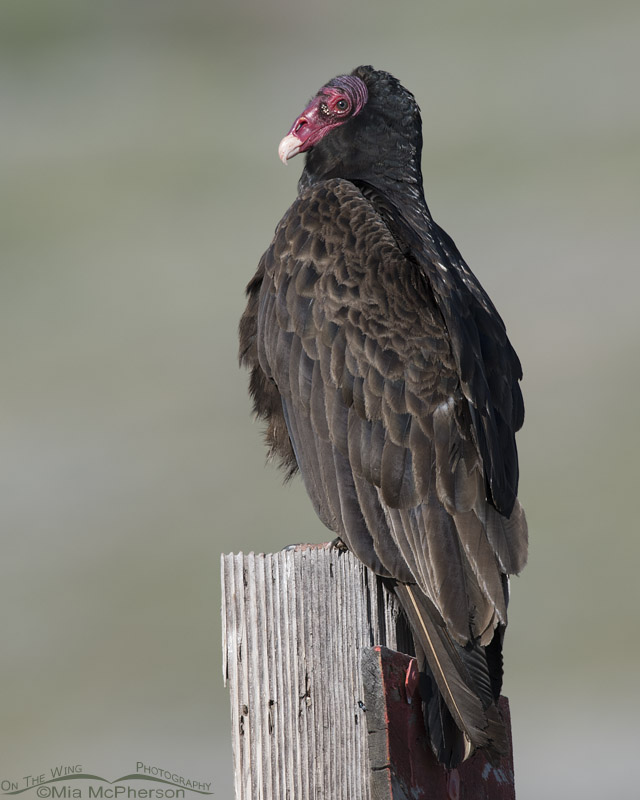 Regal looking Turkey Vulture – Nikon D500, f7.1, 1/800, ISO 320, -0.3 EV, Nikkor 500mm VR with 1.4x TC, natural light, not baited
Regal looking Turkey Vulture – Nikon D500, f7.1, 1/800, ISO 320, -0.3 EV, Nikkor 500mm VR with 1.4x TC, natural light, not baited
There are times when I go out to photograph that I find that there is a “bird du jour”, yesterday the birds du jour were Turkey Vultures for me in northern Utah. I took way too many images of several approachable roadside Turkey Vultures sunning, preening, scratching and resting but I am happy with the photos of the birds. Some of the vultures looked regal perched in the morning light.
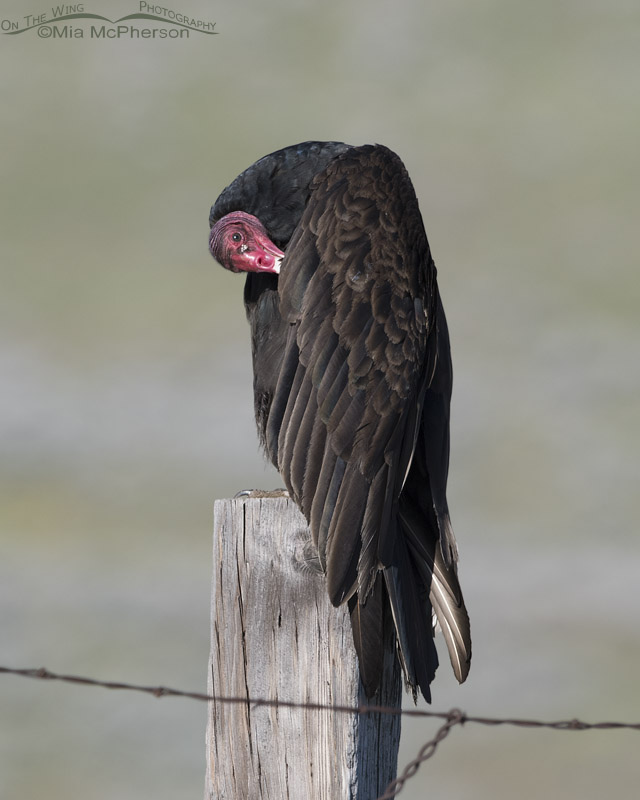 Adult Turkey Vulture preening in Box Elder County – Nikon D500, f7.1, 1/800, ISO 320, -0.3 EV, Nikkor 500mm, natural light, not baited
Adult Turkey Vulture preening in Box Elder County – Nikon D500, f7.1, 1/800, ISO 320, -0.3 EV, Nikkor 500mm, natural light, not baited
Some of the Turkey Vultures preened and fluffed to start their day. They have to keep their feathers in good condition to soar on the thermals in search of food.
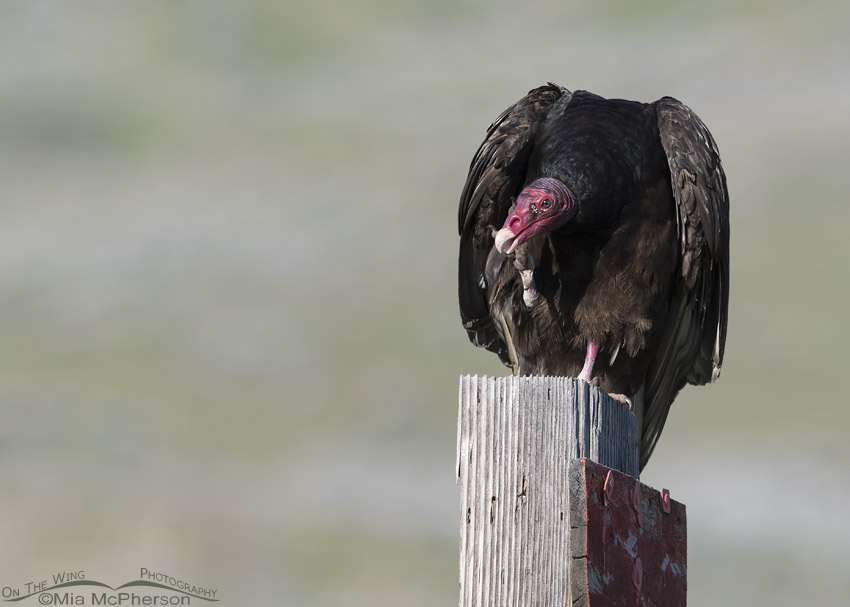 Turkey Vulture scratching its chin – Nikon D500, f7.1, 1/640, ISO 320, -0.3 EV, Nikkor 500mm VR, natural light, not baited
Turkey Vulture scratching its chin – Nikon D500, f7.1, 1/640, ISO 320, -0.3 EV, Nikkor 500mm VR, natural light, not baited
One of the Turkey Vultures kept scratching something on its chin, I never did see what was bothering it but it scratched its chin at least three times while I photographed it.
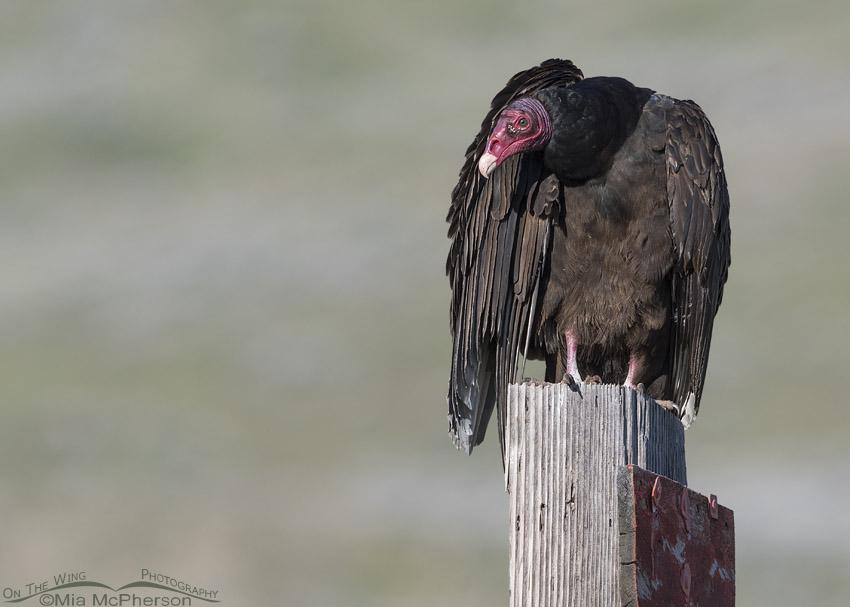 Hunched over Turkey Vulture – Nikon D500, f7.1, 1/800, ISO 320, -0.7 EV, Nikkor 500mm VR, natural light, not baited
Hunched over Turkey Vulture – Nikon D500, f7.1, 1/800, ISO 320, -0.7 EV, Nikkor 500mm VR, natural light, not baited
And it also spent time hunched over while it cleaned it feathers one at time and stared right at me. I’m glad I am not “food” because that beak looks sharp.
A few Turkey Vulture facts:
- Turkey Vultures are scavengers and will soar in the air until their keen sense of smell detects dead animals also known as carrion. They will also eat lizards, fish, small mammals and invertebrates.
- Turkey Vultures are migratory. During the warmer months they can be found in most of areas of the U.S. and extreme southern Canada. They winter in the southern U.S. plus Mexico, Central and South America.
- Turkey Vultures lay 1 to 3 eggs which hatch in 38 to 41 days. Both sexes incubate and they are monogamous.
- A group of vultures can be called a “meal”, “vortex”, “wake”, “committee” or “cast” of vultures. Nicknames include “turkey buzzard”, “John Crow” and “carrion crow”.
- Turkey Vultures can live up to 17 years or more.
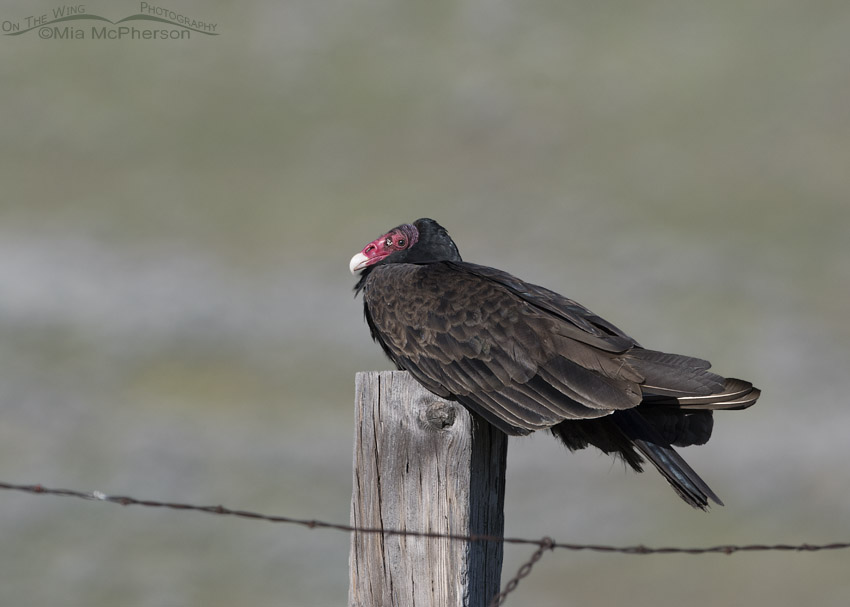 Turkey Vulture resting on a large fence post – Nikon D500, f7.1, 1/1250, ISO 320, -0.73 EV, Nikkor 500mm, natural light, not baited
Turkey Vulture resting on a large fence post – Nikon D500, f7.1, 1/1250, ISO 320, -0.73 EV, Nikkor 500mm, natural light, not baited
Some of the resting Turkey Vultures laid down on their perches and reminded me of how chickens lay down to rest on their bellies. It really didn’t look like it would be all that comfortable to me but I am not a bird so what do I know.
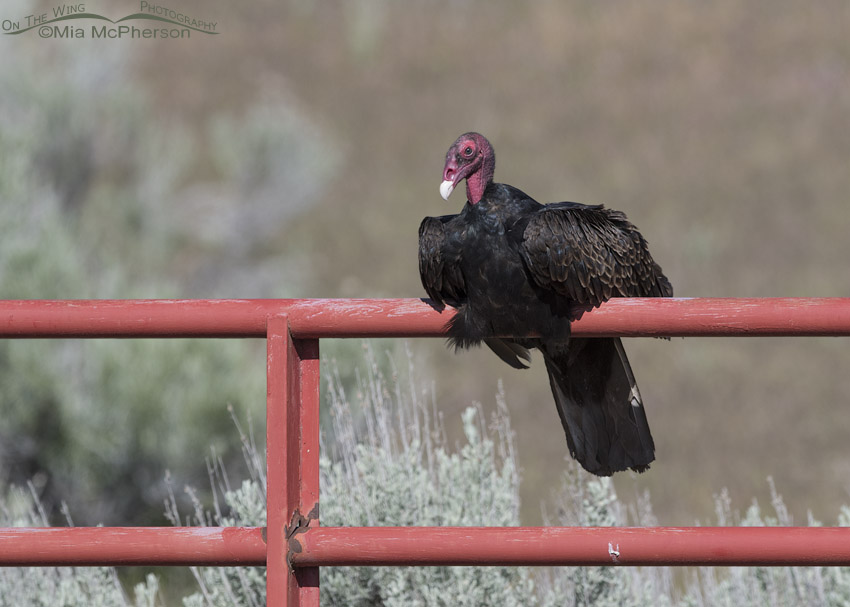 Turkey Vulture resting on a red gate – Nikon D500, f7.1, 1/1600, ISO 320, -0.3 EV, Nikkor 500mm VR, natural light, not baited
Turkey Vulture resting on a red gate – Nikon D500, f7.1, 1/1600, ISO 320, -0.3 EV, Nikkor 500mm VR, natural light, not baited
This one laid its breast down on a red gate and seemed content to rest while I photographed it from the other side of the road.
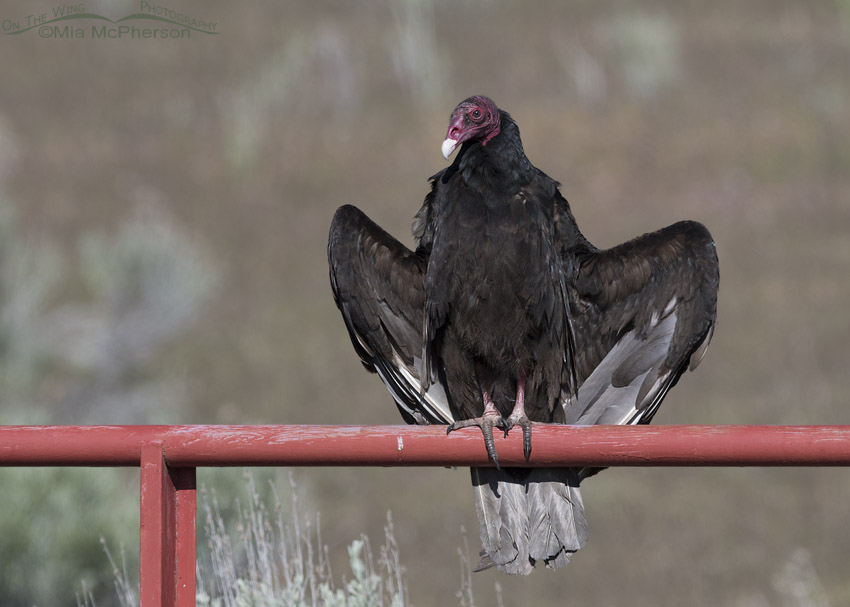 Sunning Turkey Vulture – Nikon D500, f7.1, 1/1600, ISO 320, -0.7 EV, Nikkor 500mm VR, natural light, not baited
Sunning Turkey Vulture – Nikon D500, f7.1, 1/1600, ISO 320, -0.7 EV, Nikkor 500mm VR, natural light, not baited
Until another vulture hopped up onto the gate and then this one decided to spread its wings and sun itself in the warmth of the morning light.
The biting gnats (no-see-ums) were tearing me up and I wondered if they bothered the Turkey Vultures at all.
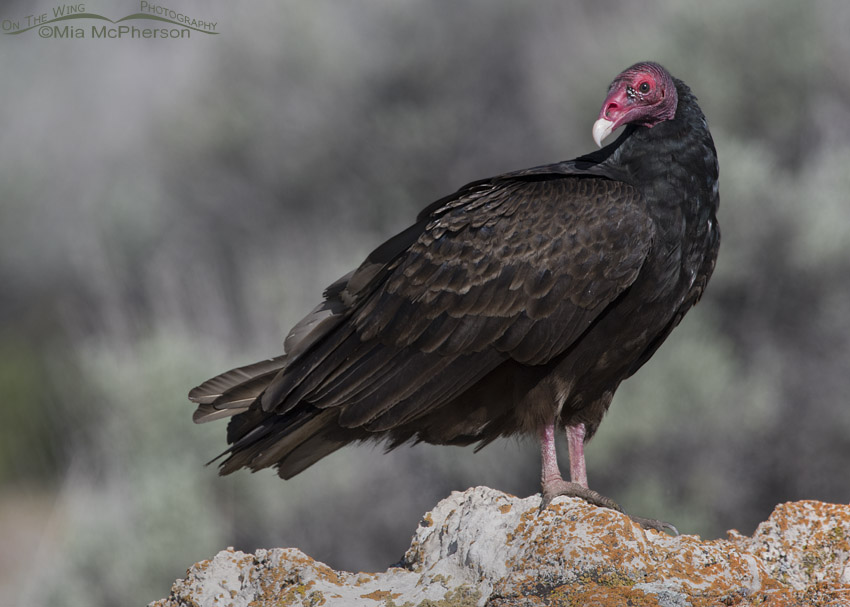 Adult Turkey Vulture on lichen covered perch – Nikon D500, f9, 1/800, ISO 320, -0.7 EV, Nikkor 500mm VR with 1.4x TC, natural light, not baited
Adult Turkey Vulture on lichen covered perch – Nikon D500, f9, 1/800, ISO 320, -0.7 EV, Nikkor 500mm VR with 1.4x TC, natural light, not baited
And I was also able to get a close up of this vulture standing on a lichen covered rock. I’m glad I had the time and opportunity to photograph the Turkey Vultures yesterday, they might not be beautiful in everyone’s eyes but they are great birds and these were all terrific subjects.
Life is good.
Mia
Click here to view more of my Turkey Vulture photos plus facts and information about this species.


Wonderful series! I was shooting some myself yesterday and enjoyed their behaviors… and their presence.
Isn’t there something wonderfully primeval about a vultures head? I can’t get over the feeling that as I look at these extraordinary images…I am looking back in time. Great pics Mia.
An interesting series of an often ignored bird. It’s beauty in the sky(with its signature shallow V and “rock and roll” soaring, makes up for whatever it lacks lack in beauty on the ground. The first image reminds me of old time tintype photos of “Papa” and the bird in the fifth image looks like someone flattened its head with a 2″ x4″‘….
Sure would love to see a bunch of these circling the White House….DC in general….
We need the clean-up crew. In so many aspects of our lives. Hooray for the vultures.
Outstanding series! I truly love vultures, and in my new home in Golden Valley, Arizona, I’m blessed to watch a wake of vultures and their fancy soaring! I prefer to use the term wake since it harkens back to their proximity to death and final funeral services–but that’s just me! Vultures are just too cool! They’ve evolved to be the perfect clean-up crew in our environment from the tip of their beak down to the end of their toes. It’s a sheer delight to watch them in the sky, HOWEVER, I always make sure to look alive 🙂
Wonderful series!
Fantastic photos. I love photographing vultures (turkey and black) for the simple reason that they are so cooperative.
Nice series Mia.